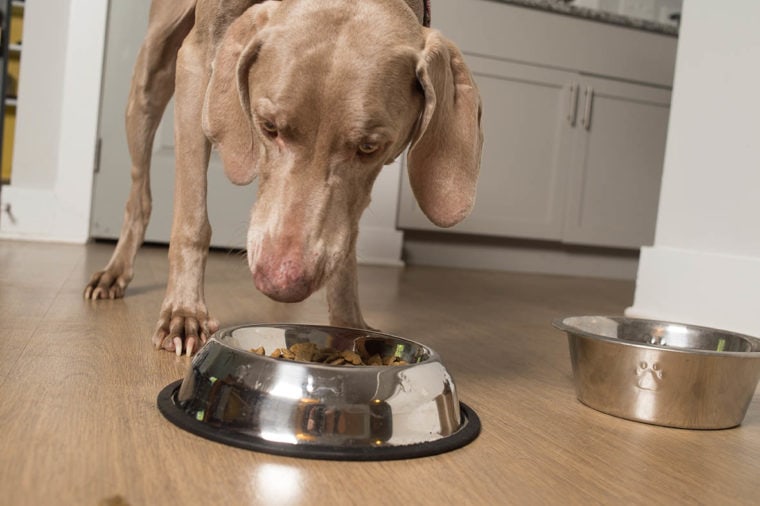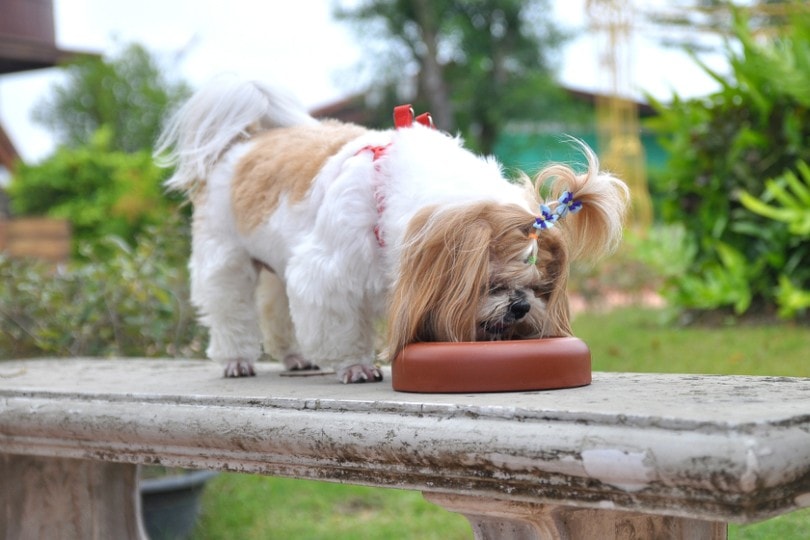How to Add Grain to a Grain-Free Dog Food? What You Need To Know!

Grain-free dog foods have been touted as the healthiest choice for dogs, but new research suggests that these diets carry hidden risks. Whole grains are a healthy choice for most dogs, and some owners are considering adding their own grains to dog food to make it healthier and get some of the benefits from grains. If this is you, here’s what you need to know!

Why Avoid Grain-Free Dog Food?
Over the past several years, grain-free foods exploded in popularity, with hundreds of options now available on the market. But in June 2019, the FDA announced the possibility of a link between grain-free foods and heart disease. Dogs eating a grain-free diet had a higher risk of dilated cardiomyopathy. At the same time, research has shown that whole grains are a healthy part of most dogs’ diets and that most food allergies aren’t to grains. Because of this, most dogs don’t need a grain-free diet and would actually benefit from grains. If you want to try adding grains to your dog’s diet, here are five steps to help you get started.
The 5 Steps To Add Grain to a Grain-Free Dog Food
1. Determine Whether Grain Is Needed

Unfortunately, avoiding the risks that come from grain-free food isn’t as simple as mixing some oatmeal in. Dog foods should be nutritionally balanced, and many grain-free foods are already high in carbs from sources like potatoes and legumes. It’s also not known whether it is the lack of grains that is linked to heart issues or whether these issues are linked to common substitutes. However, there may be times when adding grain is okay.
Looking at your dog’s food label is the most important step in deciding whether you want to add grains. Dog food should be no more than 50% carbs and at least 10–20% protein and 5–10% fat. If your dog food is over 30% protein, adding in some grains might be beneficial.
2. Choose a Grain Source
There are many different types of grains that are used in dog foods. Wheat, rice, corn, barley, sorghum, millet, quinoa—the list goes on and on. Each grain has its own health benefits. Some dogs have sensitivity to common grains, including wheat and corn.
Another thing to consider when adding grains is the ease of access. It’s important to find a grain that you have access to and that is easy to prepare. Two of the best choices for adding to dog food are brown rice and oatmeal. That’s because they are healthy, easy to prepare, and widely available.
Brown rice is ideal for dogs with sensitive stomachs because it is easy to digest. It is high in B vitamins and a good source of fiber. Oats are low in gluten, high in protein, and good for dogs with blood sugar or cholesterol issues. Oatmeal is a great way to add oats to your dog’s diet. Although these are some of the easiest choices, you can add a different whole grain to your dog’s diet as well.
3. Cook or Prepare Grains as Needed

Once you have your chosen grain in hand, it’s important to prepare the grains. Most grains require cooking to be easily digestible. You can prepare food similarly to how you might prepare it for humans. For example, rice can be boiled in water to prepare it. Although you have lots of options to prepare, it is best to pick a method that doesn’t add other ingredients like fats or dairy ingredients. For example, if you want to add corn to your dog’s diet, you’ll want to prepare plain grits from cornmeal, not cornbread.
4. Mix Grains Into Food
Once grains are prepared, you can start adding them to your dog’s food. If your dog eats wet food, it is easy to stir a few spoonfuls into your dog’s food. It can also be mixed into dry food as a topper. Some dogs might enjoy eating the grain food plain as well. Other dogs might be pickier, so it is important to figure out what the best way to feed your dog is.
5. Find the Balance That’s Right for Your Dog

Just adding food to your dog’s diet without considering nutritional needs is a key for disaster. It’s best to start small, adding just a tablespoon or two of grains at most. Long-term, your dog probably won’t want a ton of grains because of the high carb content. Make sure to count the calories and carbs that your grains are adding to your dog’s meals so that you can adjust them accordingly. Remember that you never want your dog’s protein and fat intake to dip too low or his carb intake to be too high!

Last Thoughts
Adding grains to dog food isn’t the best choice for every owner, but in some cases, it can be a great way to supplement a protein-heavy food and add extra nutrients. We hope that this guide helped you decide whether it is the right choice for your dog.
Featured Image Credit: Laura Beach, Shutterstock



Không có nhận xét nào